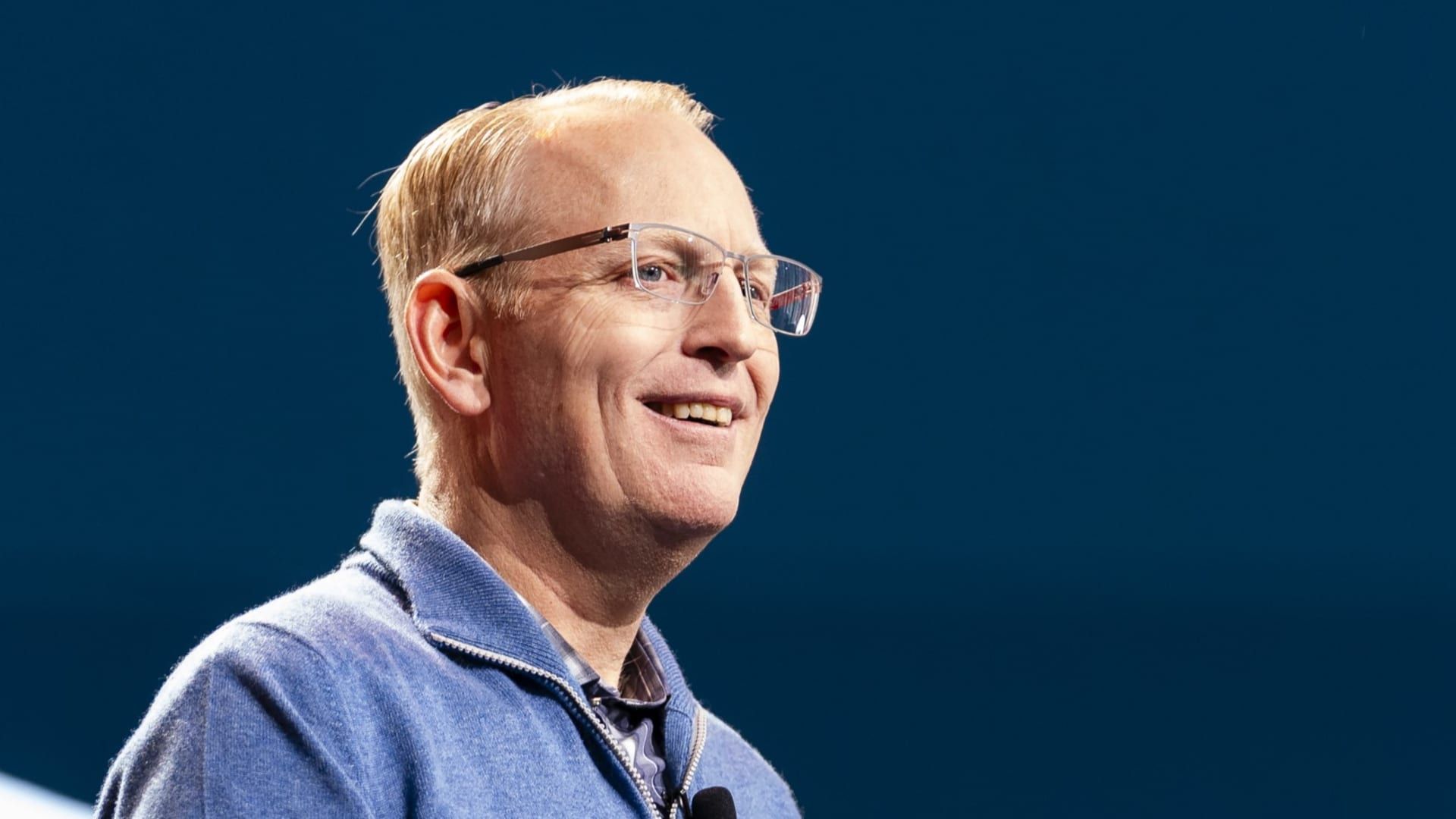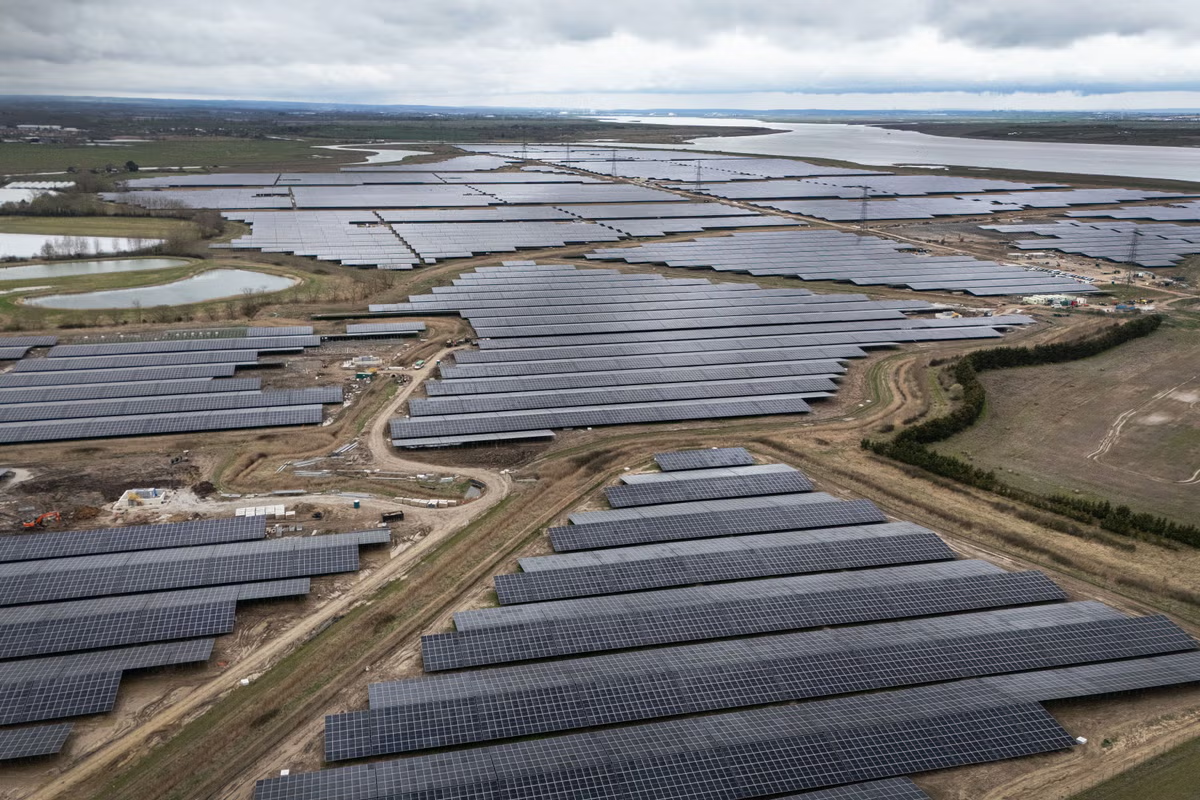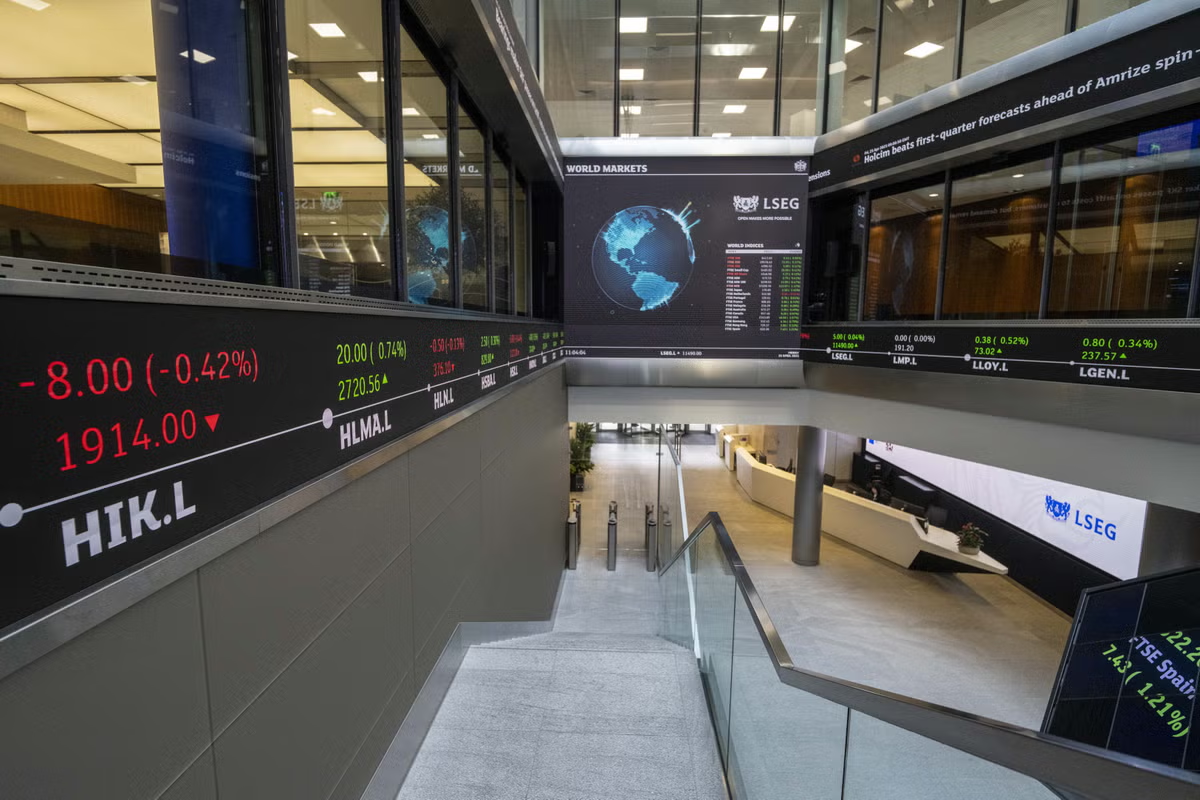Blue Origin CEO Dave Limp, left, and founder Jeff Bezos look at a New Glenn rocket at the company's LC-36 facility in Florida.
blue origin
Dave Limp had just one question for Jeff Bezos when he was interviewed last year to become CEO of Blue Origin, the billionaire's space company.
“Jeff, is Blue Origin a hobby or a business?” Limping asked.
After 14 years as a senior Amazon The executive, Limp, told CNBC that he made it clear to Bezos that he was not interested in leading Blue Origin if the nearly 25-year-old company was not destined to be a serious company.
“I don't know how to handle a hobby,” Limp said, adding that “if it was a hobby, it's not right for me.”
But he said Bezos insisted that Blue Origin had to be a business.
Limp admitted that Bezos took some convincing to move into space. “My initial reaction was: It's not the right position for me because I'm not an aerospace engineer,” he said. But he decided to take a leap of faith.
“Jeff felt that [Blue Origin] manufacturing experience required; I needed decision; It needs a little energy,” Limp said.
Limp has been Blue Origin's CEO for nine months and counting. He took the reins from previous leadership that had vastly expanded the company's workforce and infrastructure, but had fallen years behind on several major programs and lost competition for key government contracts.
CEO Dave Limp, third from left, with Blue Origin employees at the company's facility in New Glenn, Florida.
blue origin
For years, Blue Origin has taken tourists and researchers to the edge of space on short excursions, including Bezos himself. And for the past two decades, Bezos has spent billions of dollars a year to turn Blue Origin into a space powerhouse. The company's projects range from rockets and spacecraft to space stations and lunar landers.
However, in the stakes of the orbital missions industry, Blue Origin has not entered the serious rocket game, as the US launch market remains dominated by SpaceX, followed by United Launch Alliance. rocket laboratory and Firefly Aerospace.
But the company said it is closer than ever to the long-awaited debut of its New Glenn rocket. Standing about 320 feet tall, the launch vehicle is advertised as being able to lift up to 45,000 kilograms (or more than 99,000 pounds) into low-Earth orbit, twice as much as SpaceX's Falcon 9 rocket.
A New Glenn rocket is on LC-36 for the first time for tank and mechanical system testing on February 21, 2024.
blue origin
Like Falcon 9, New Glenn is designed to be partially reusable. Blue Origin aims to return and land the rocket's booster, its largest and most valuable section, to unlock the kind of cost and time efficiencies that SpaceX claims with its rockets.
The first launch attempt of New Glenn is scheduled for November. Blue Origin is in the final stages of putting it all together, including conducting a crucial recent firing test of the rocket's upper stage last month.
Originally, the company aspired to the audacious feat of flying NASA's ESCAPADE mission to Mars in New Glenn's debut. But with a shrinking release window, the agency delayed ESCAPADE for a later release. In lieu of the mission, Blue Origin will demonstrate its Blue Ring spacecraft on New Glenn's first launch.
Cultural change
Company employees stand beneath a New Glenn rocket during testing in February 2024.
blue origin
Headquartered in the Seattle suburb of Kent, Washington, Blue Origin has more than 10,000 employees there and in a half-dozen other major locations across the country, including the industrial strongholds of Texas, Florida and Alabama. Speaking plainly, Limp said Blue Origin has been “in sort of an R&D phase for a long time,” an aspect of the company's culture it is trying to change.
“We were very, very good at building shiny factories and very good at building high-fidelity prototypes. And some of those prototypes even flew… but that's not what we want to do to scale up and become a world-class manufacturer,” Limp said. .
“We need to be able to build a lot of things,” he added.
But he said he sees a genuine enthusiasm for space throughout Blue's workforce, calling that passion the foundation of a “missionary culture.” In Limp's view, Amazon's customer-centric principles drive the tech giant's culture, but Amazon doesn't have “the passionate mission that exists at Blue.”
“People's eyes light up, almost to a T. They grew up thinking about space, they always wanted to work in the space industry and here they are at Blue working in space,” Limp said.
It is now trying to install Amazon's customer-centric approach as a key part of Blue Origin. While Blue's customers (like NASA, ULA, and suborbital astronauts) are quite different from the consumers Limp used to focus on, his message to Blue employees is to make delivery to his customers a top priority. .
“Even if the technology is really nice and fun… the customer has to be front and center,” Limp said.
To further change Blue's culture, Limp highlighted a number of key leadership additions: Allen Parker as CFO after executive finance roles at Zillow and Amazon; Jennifer Peña-Leanos as chief people officer, after leading human resources on Limp's former Amazon Devices team; Ian Richardson as senior vice president of manufacturing operations after a long stint as SpaceX's director of production; and Tim Collins as vice president of global supply chain after previously leading global operations for Flexport and Amazon.
Limp also made a change by moving more of the company's workforce to the factory.
“You can walk into a factory and know when it's working well and when it's not,” he said. “It doesn't matter how much capital expenditure you put in, what kind of machines you have, if you're not using them the right way. It's like having a shiny new car that just sits in your driveway – how fun is that? !” ?”
2024 top priorities
A BE-4 engine test at Blue Origin's Launch Site One facility in West Texas, August 2, 2019.
blue origin
Limp has two main goals for his first year as CEO: launching New Glenn and getting Blue's engine production up and running.
“We're not going anywhere without engines, and we had to figure out how to build engines at an appropriate pace,” Limp said.
Blue Origin's BE-4 engine powers both its New Glenn rocket and ULA's Vulcan rocket. The latter requires two engines per launch.
With ULA targeting four Vulcan launches this year, with two canceled and two remaining, Blue has delivered eight ready-to-fly BE-4 engines to ULA, as well as seven BE-4 engines for its first launch at New Glenn. In the first two Vulcan launches, the BE-4 engines performed as expected.
“We would like [be delivering] about one engine per week before the end of the year. I'm not sure we'll get to exactly a week, but it will be less than 10 days… [and] by the end of 2025, we have to be faster,” Limp said.
A United Launch Alliance Vulcan Centaur rocket launches from pad 41 at Cape Canaveral Space Force Station at 7:25 a.m. Oct. 4, 2024 in Cape Canaveral, Florida.
Pablo Hennessy | Anadolu | fake images
Limp has “a very high level of confidence” that New Glenn will be released before the end of the year. And Blue plans to rapidly scale the cadence of New Glenn missions, aiming for up to 10 New Glenn launches next year. However, it still has a long way to go to compete with SpaceX, which is targeting about 150 Falcon rocket launches this year.
Perhaps even more optimistically, Blue aims for New Glenn to make it to its first launch, cheekily calling the booster “So you're telling me there's a chance.” No company has successfully landed on the first try with an orbital booster rocket, and New Glenn will target a 200-foot-wide platform on a ship called Jacklyn in the Atlantic Ocean.
“It will be adventurous. It will be fun. I'm excited about it… but if [don’t] Keep the landing the first time, it's fine. We have another reinforcement right behind us. “We will build more,” Limp said.
The first flight of the New Glenn booster rocket.
blue origin
It seems almost inevitable that New Glenn's future will involve a crewed spacecraft, especially given Blue's long mission: “We envision millions of people living and working in space for the benefit of Earth.” Currently, only SpaceX's Dragon spacecraft is certified by NASA to carry astronauts to and from orbit after boeing Starliner suffered another setback this summer.
But Limp desisted when asked about developing a capsule for the New Glenn crew: “There's nothing to say about it.”
Blue Origin has gained experience in the lower-risk suborbital realm of human spaceflight with its New Shepard rocket and capsule. Limp noted that Blue Origin is working to get “New Shepard back to a regular flight cadence,” transporting both crews and research cargo.
It has flown two New Shepard missions this year and is aiming for a third next week. That mission will also include a new rocket booster and a capsule to add a second vehicle “to better meet growing customer demand,” the company said, after losing a booster during a failure on a cargo flight in September 2022. .
Beyond New Glenn and engine production, Blue is making more progress: Last year it won a $3.4 billion NASA contract to build a lunar lander for the agency's astronauts. In the spring, Blue entered the Pentagon's lucrative National Security Space Launch program, a radical change after missing the previous NSSL phase in 2020.
As for Limp, he spends his time on “a little round trip between” Blue Origin facilities every two and a half weeks. He goes from his headquarters in Seattle, to meet with clients in Washington, DC, to see engine production and testing in Huntsville, Alabama, and finally to check out New Glenn's work in Cape Canaveral, Texas. It's all part of his interest in leading a proper space company, rather than a billionaire's hobby.
“Let's have the financial discipline to build a business we love and make decisions quickly, knowing we'll make some mistakes. But let's not make the same mistakes and fix them quickly,” Limp said.










